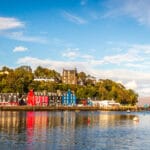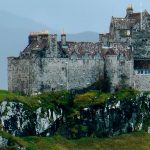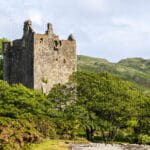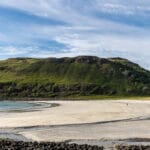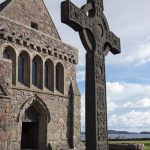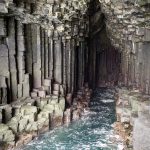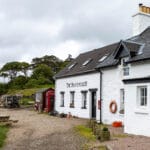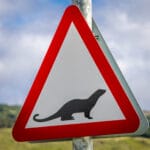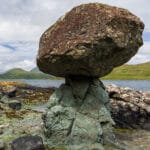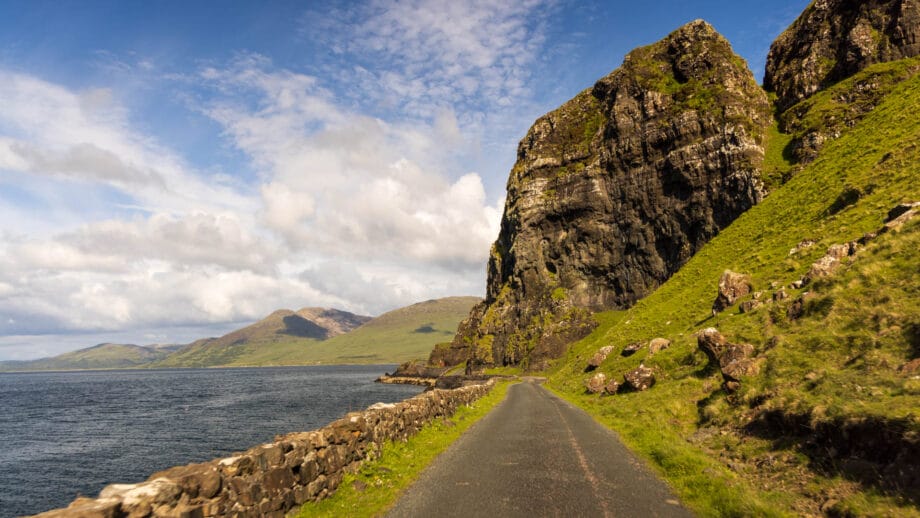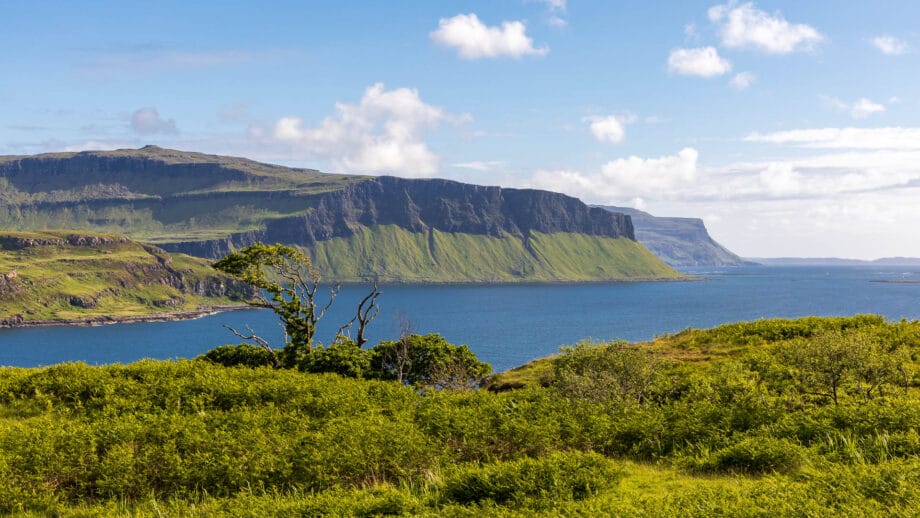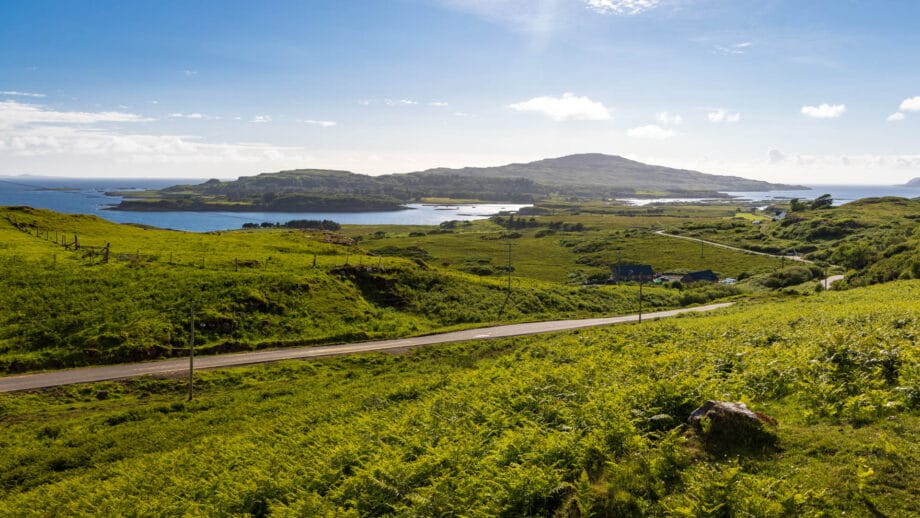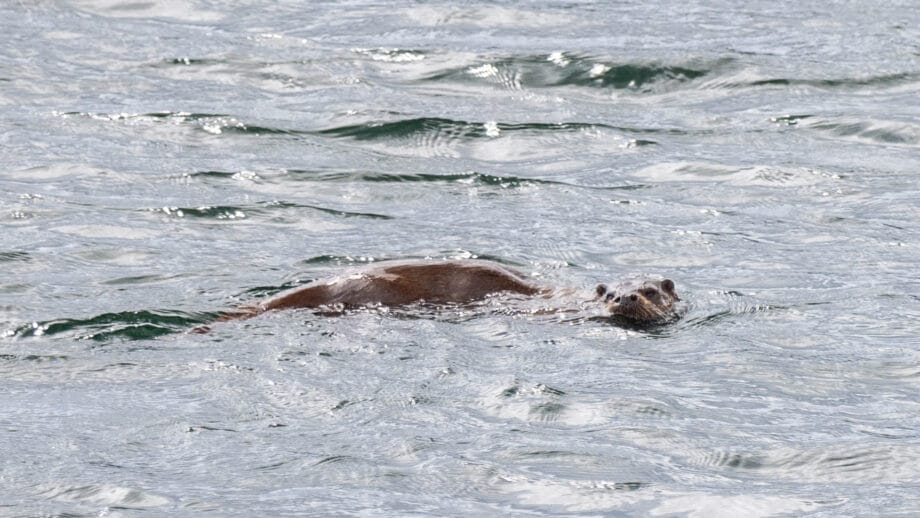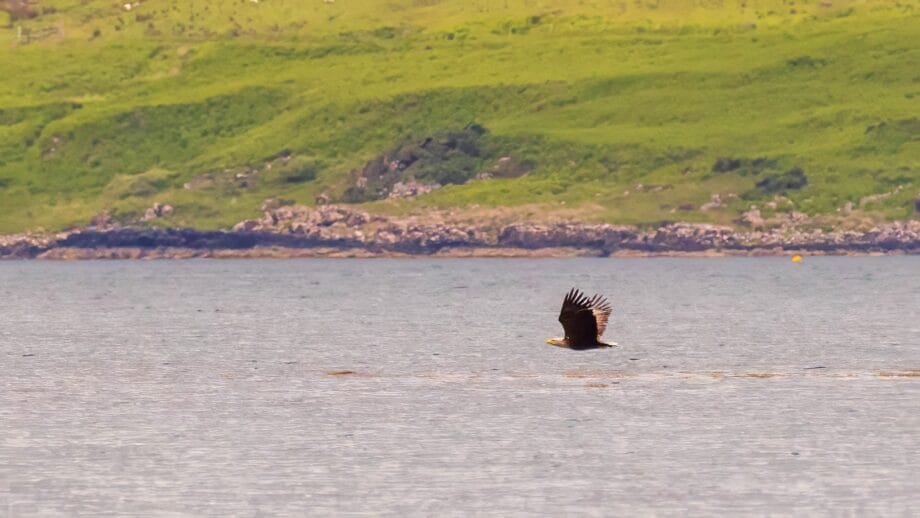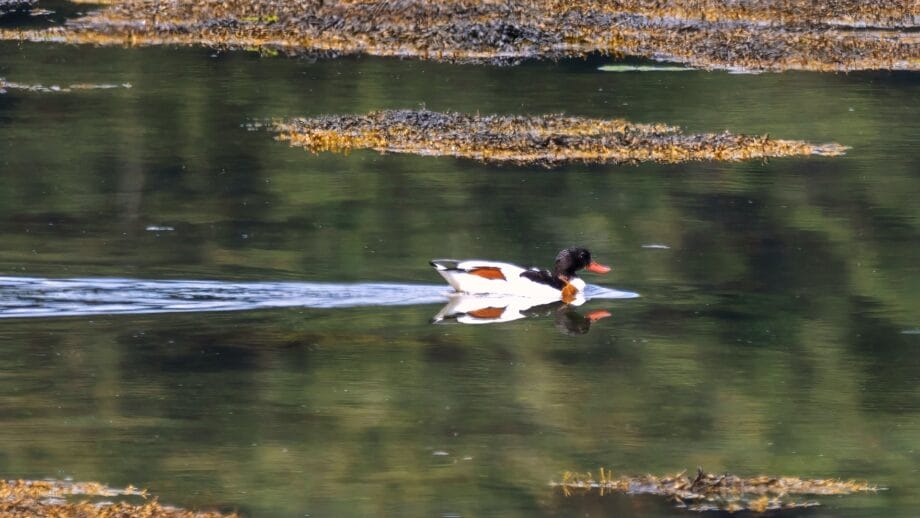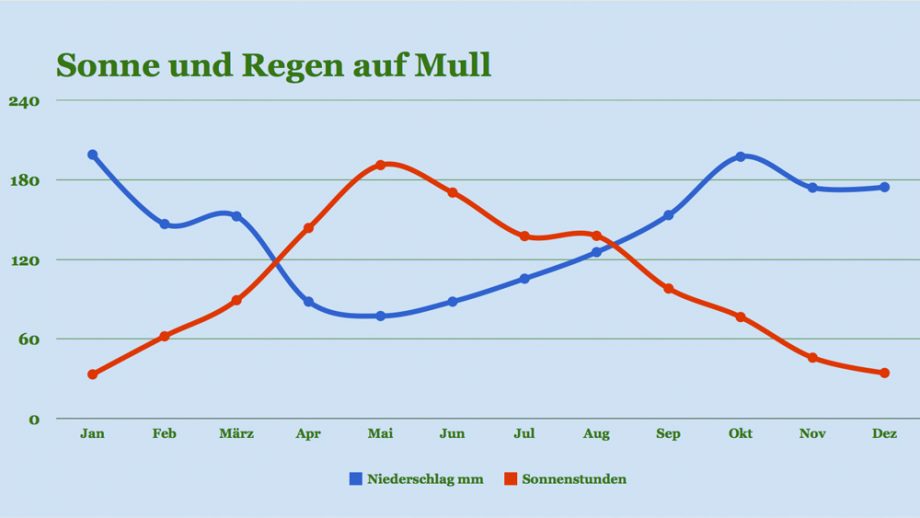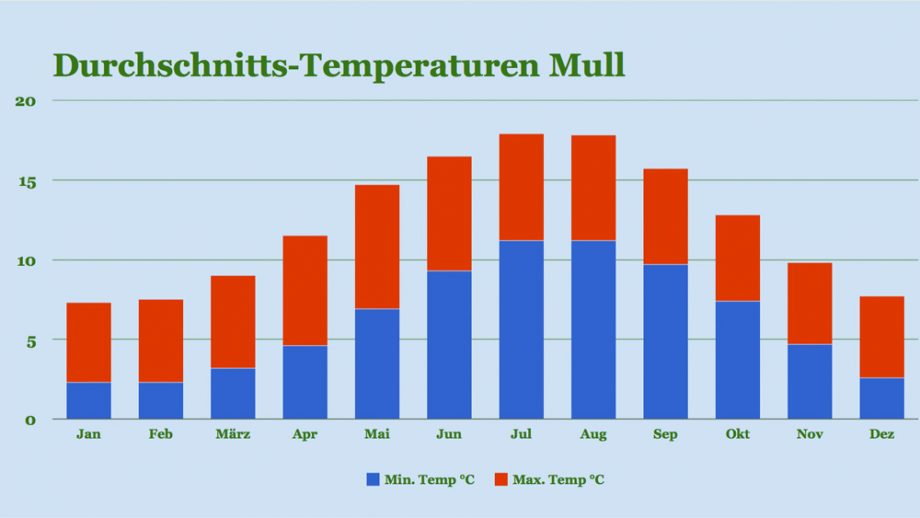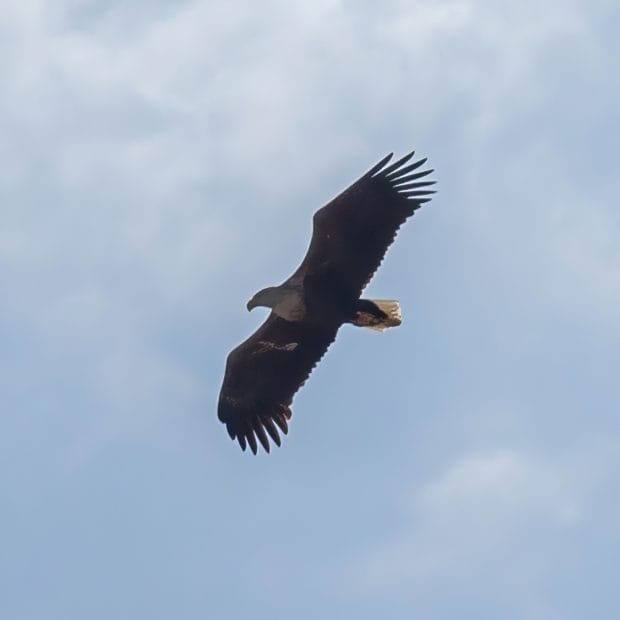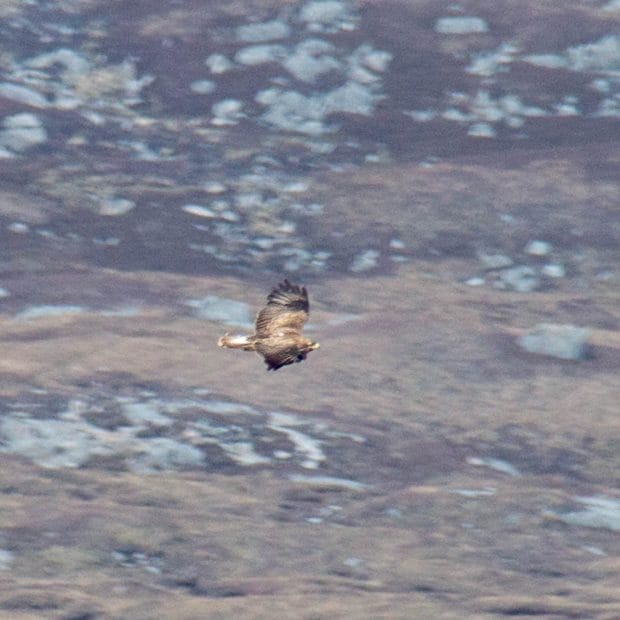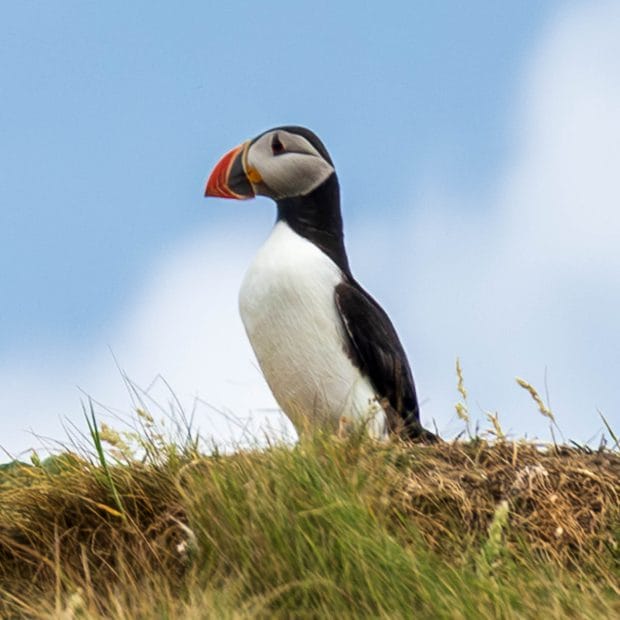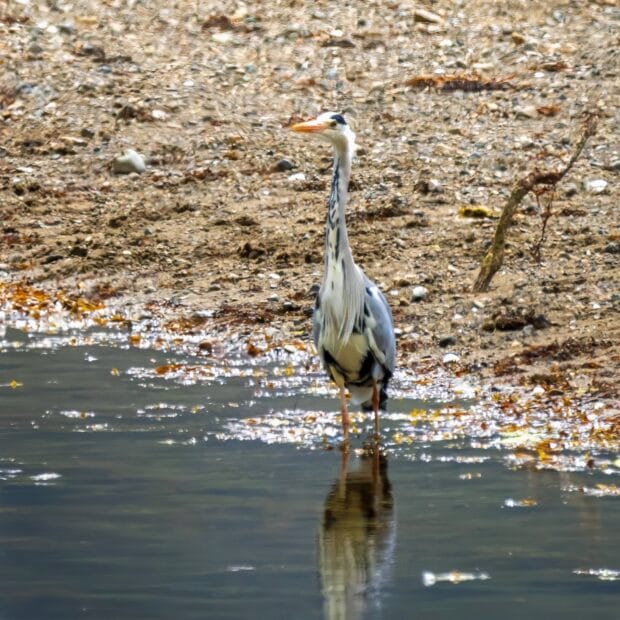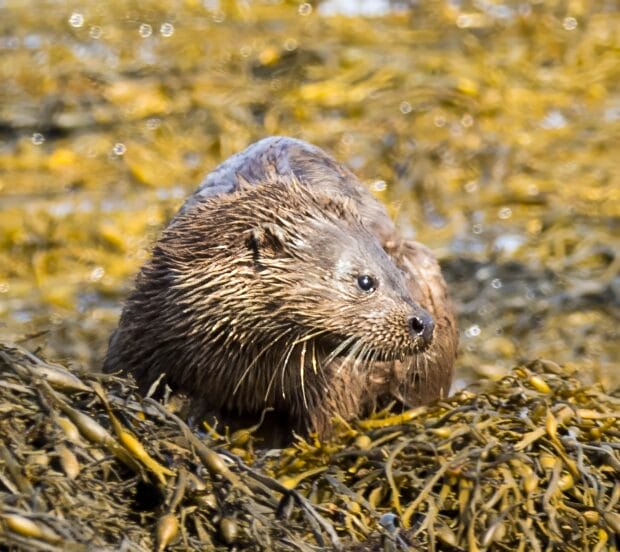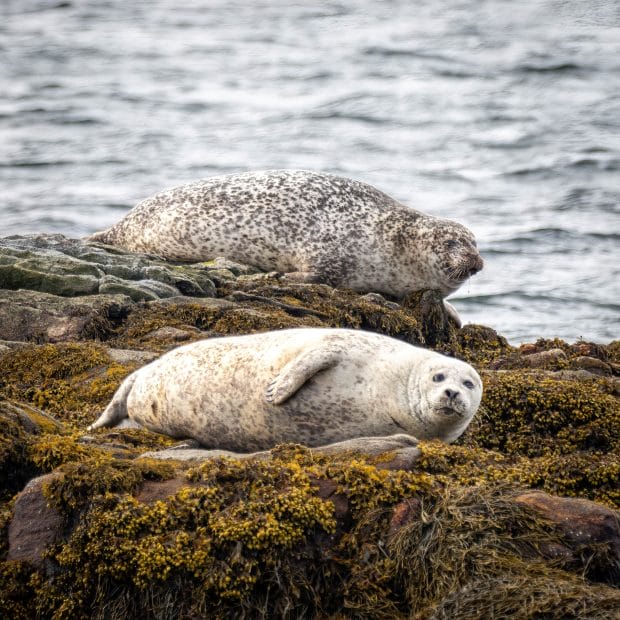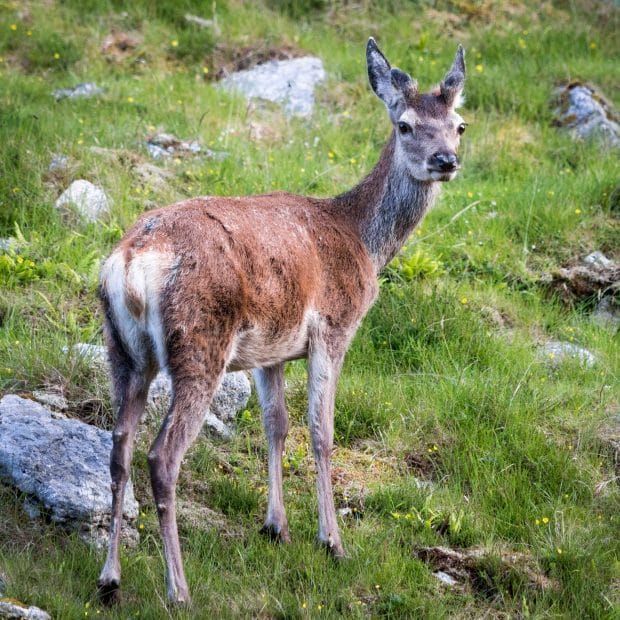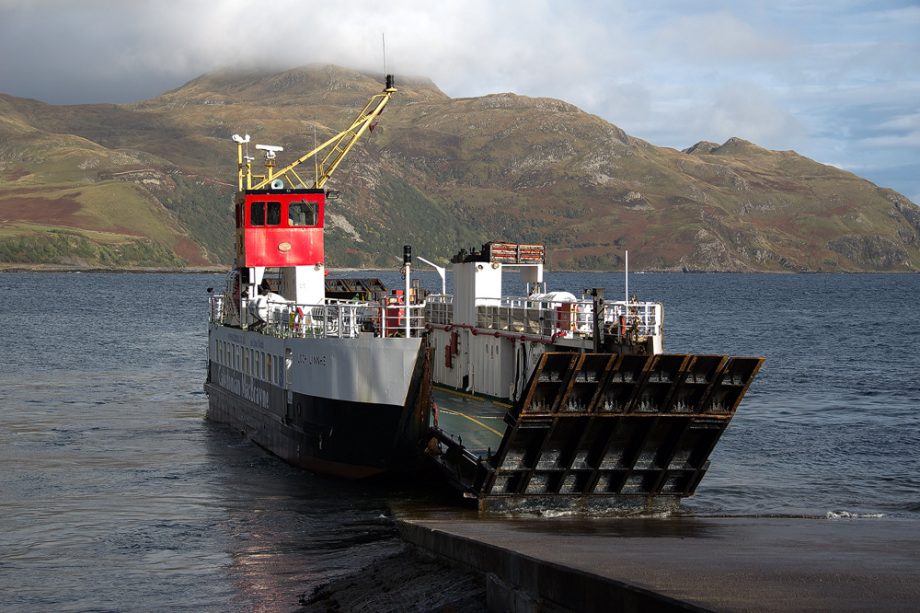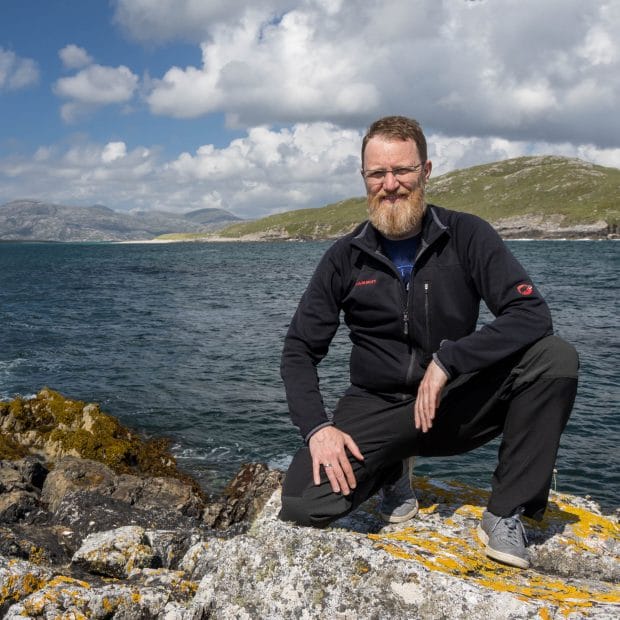Isle of Mull: Attractions, activities, best time to visit
It is the island of eagles, deer, seals and otters. The Isle of Mull enchants Scottish holidaymakers with its biodiversity in beautiful scenery.
Contents: Top 10 places to visit | things to do | best time to travel | getting there & away | food & drink | nature | history
The Isle of Mull has many faces: In the west it has breathtaking cliffs broken by deep holes where eagles and otters cavort. Inland, there are green mountains and highlands that immediately remind you of the Highlands. The eastern side of the strait is flatter, the land seems more cultivated with more forest.
But is the Isle of Mull worth a visit? – Definitely! The island is more varied than any other in Scotland. You can go hiking, visit castles or take a trip out to sea. Gourmets can enjoy locally produced whisky, cheese, chocolate and seafood. If you add the island of Iona to the list, Mull also offers some Caribbean white sandy beaches. And for birdwatchers and otter spotters, Mull has long since ceased to be an insider’s tip.
In short: It’s absolutely worth including the Isle of Mull in a trip to Scotland.
Mull in brief
| Name: | Mull, Isle of Mull, Muile, An t-Eilean Muileach |
| Specialities: | enchanting landscapes, vast coasts, nature with eagles and otters, castles |
| Activities: | Hiking, wildlife watching, excursions to other islands |
| Languages spoken: | English |
What Mull is known for
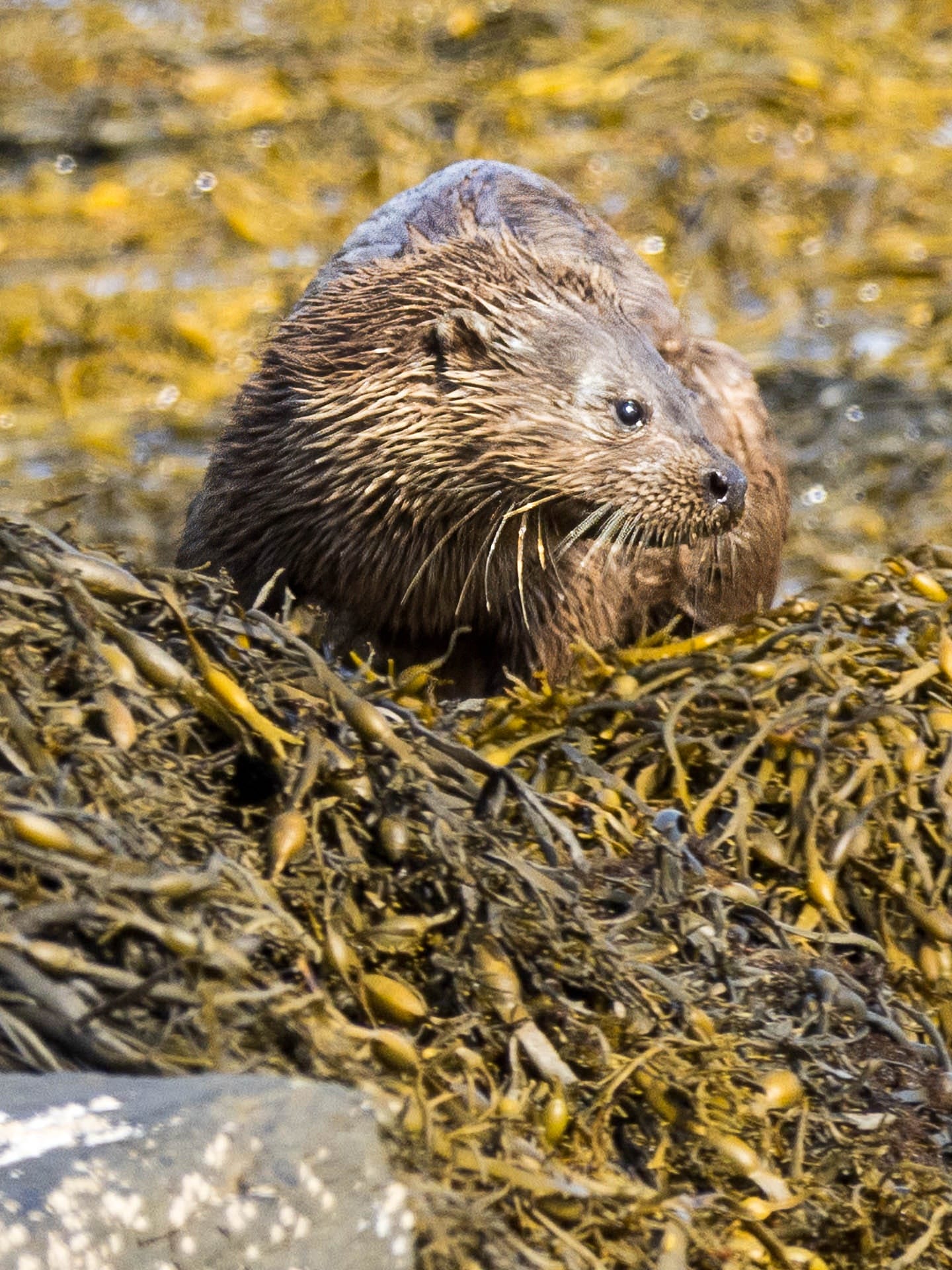
Wildlife
Eagles, deer, otters, seals … life is abundant on and around Mull. Nature lovers get their money’s worth.
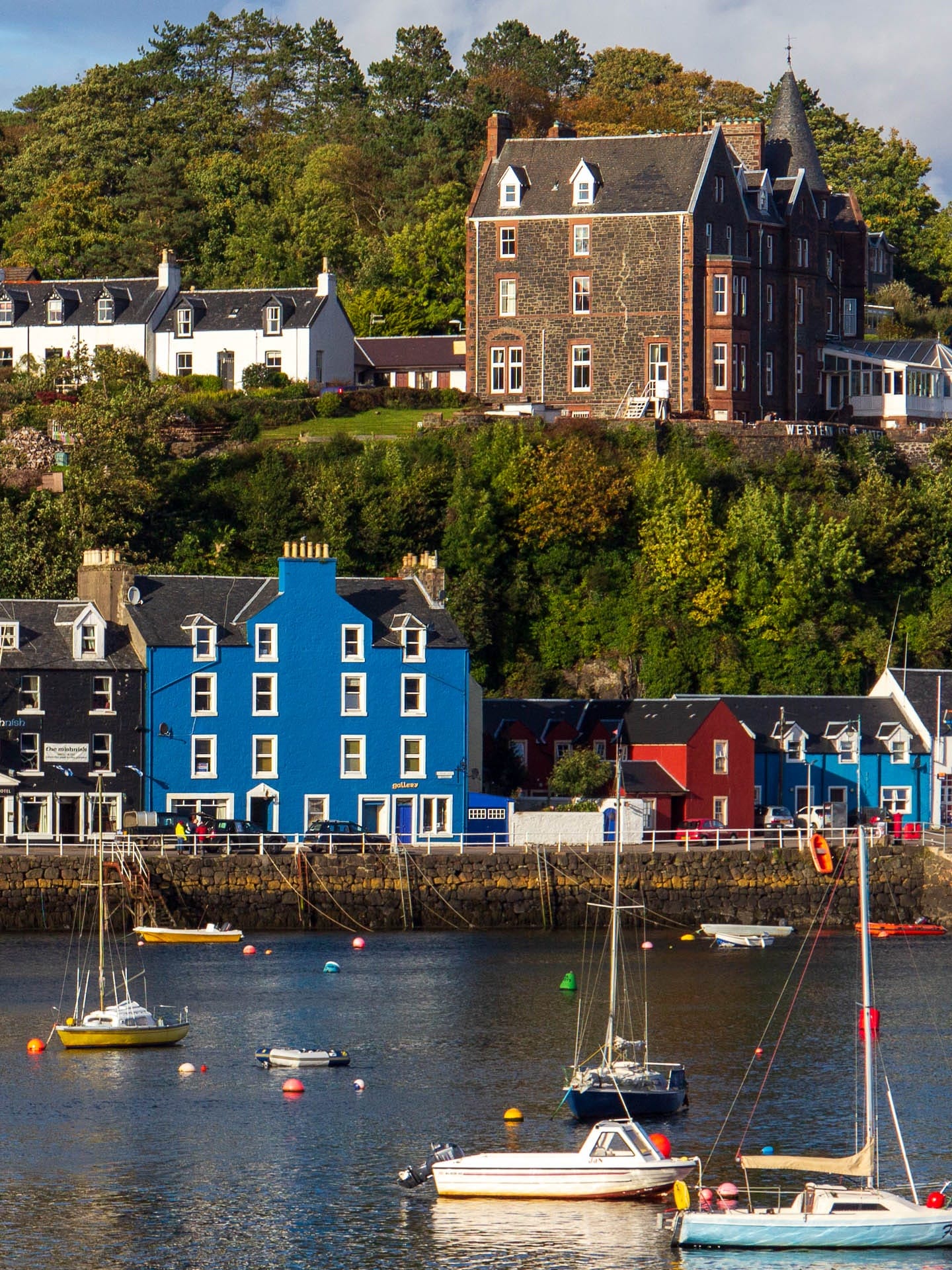
Tobermory
Mull’s main town, Tobermory, is arguably one of the most beautiful settlements in Scotland. A shopping trip is a must.
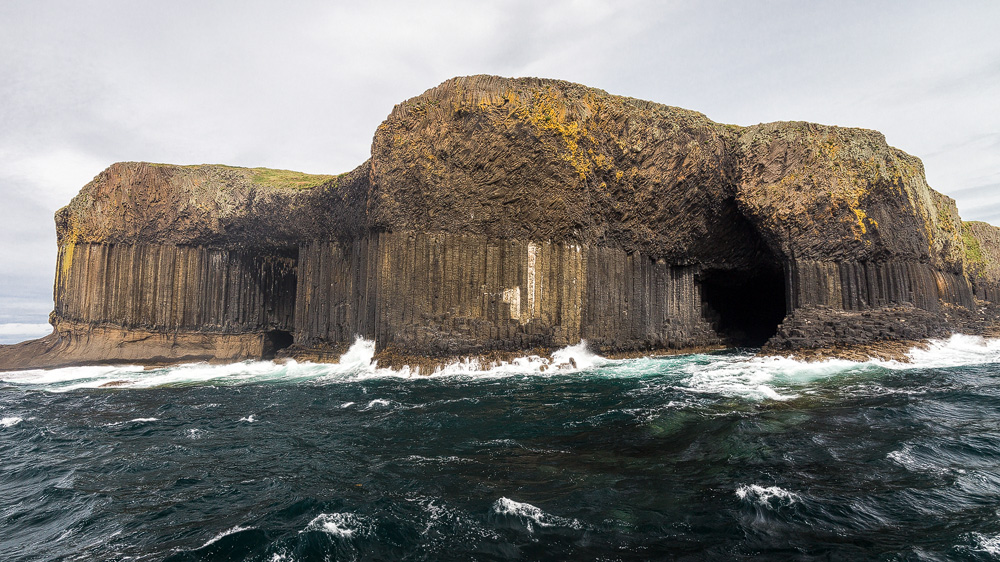
The islands
Day trips from Mull include Iona, Staffa, Ulva and many other beautiful islands
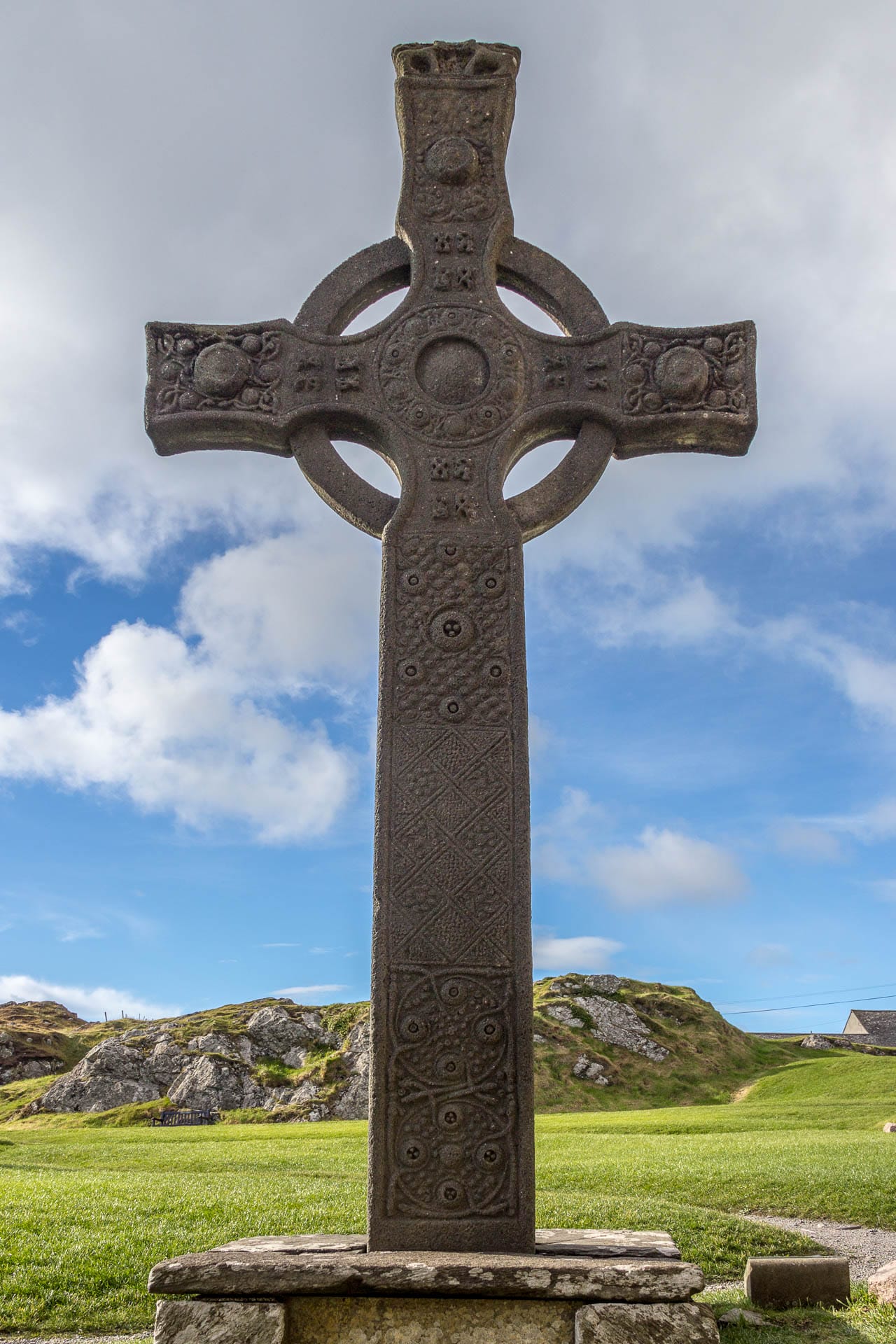
The history
Castles, stone circles and monasteries: Mull and its islands are an important part of Scottish history.
Top 10 sights on the Isle of Mull
Map with all sights
You are currently viewing a placeholder content from Google Maps. To access the actual content, click the button below. Please note that doing so will share data with third-party providers.
More InformationTop 3 Tips: Activities on Mull
1 – Take the road along the west coast
The vastness and the fantastic mountain landscape paired with the sea make the west of Mull particularly beautiful. A scenic single-track road runs along the coast:
2 – Go on a boat trip
Excursions out to sea depart from Tobermory, but also from the ferry terminal at Ulva. In most cases, the Treshnish Isles are on the programme. If you travel from Tobermory, you can often see eagles on the coast at Glerngorm.
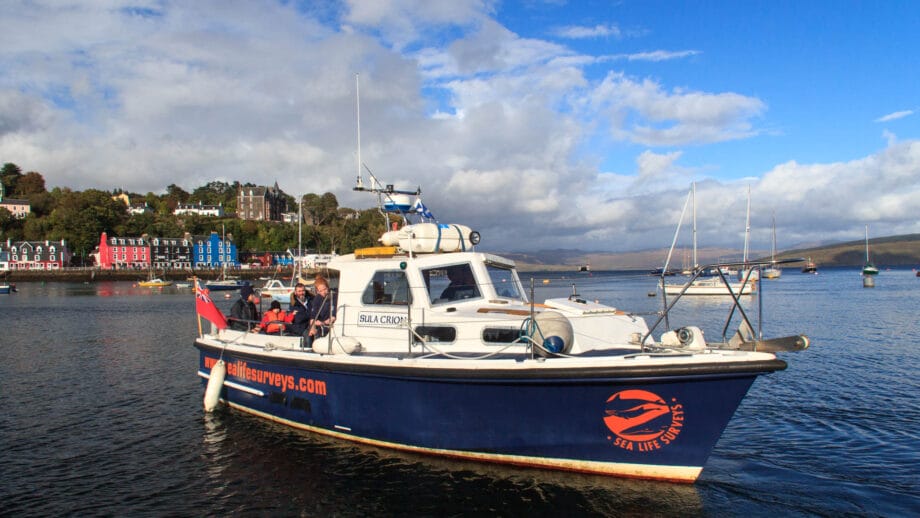
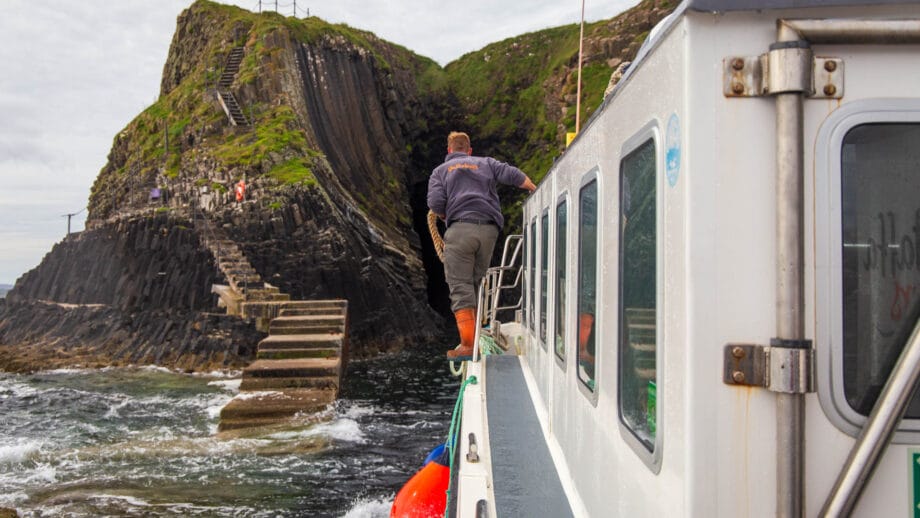
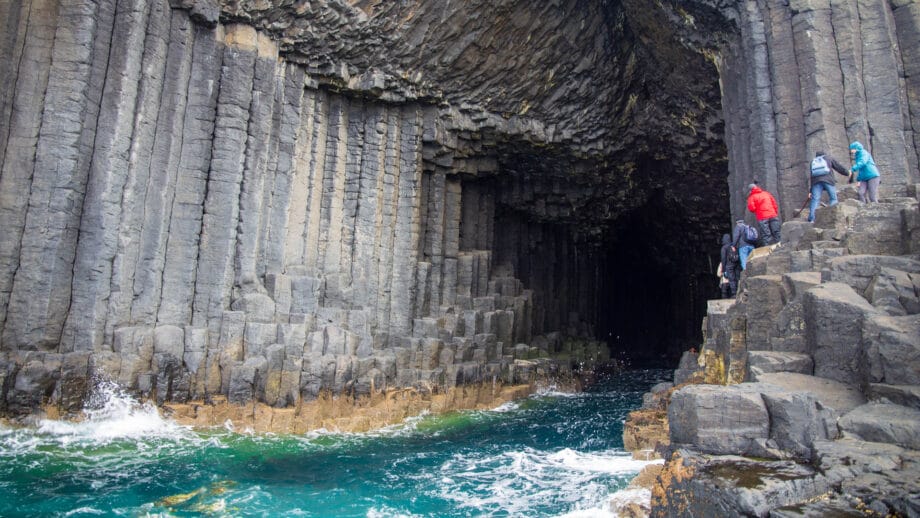
Providers are among others:
- Sealife Mull (formerly Sea Life Surveys) from Tobermory
- Staffa Tours from Tobermory
- Turus Mara by Ulva Ferry from
3 – Observe wild animals
The guides on the Isle of Mull know the nesting sites and feeding areas of the animals. They will take you on day trips to the best spots and often bring spotting scopes and binoculars with them.
Providers are among others:
- Mull Wildlife Tours ab Craignure
- Nature Scotland from Tobermory
Best time to travel for the Isle of Mull
The warmest days are of course in the height of summer, i.e. July and August. But if you want to find the best combination of little rain and lots of sun, you have to stick to the month of May.
Here, a whopping 191 hours of sunshine are offset by only 77 millimetres of rainfall, spread over just twelve days. All this with average temperatures of around 15 degrees Celsius. Sunny prospects!
Food and drink on the Isle of Mull
Mull is full of good restaurants, pubs and inns. There is also an excellent chocolaterie, the whisky distillery and other restaurants in Tobermory.
Especially when it comes to restaurants: book in advance! Especially in the high season, places fill up quickly.
Here are a few tips from the wide range on offer:
Tobermory Distillery
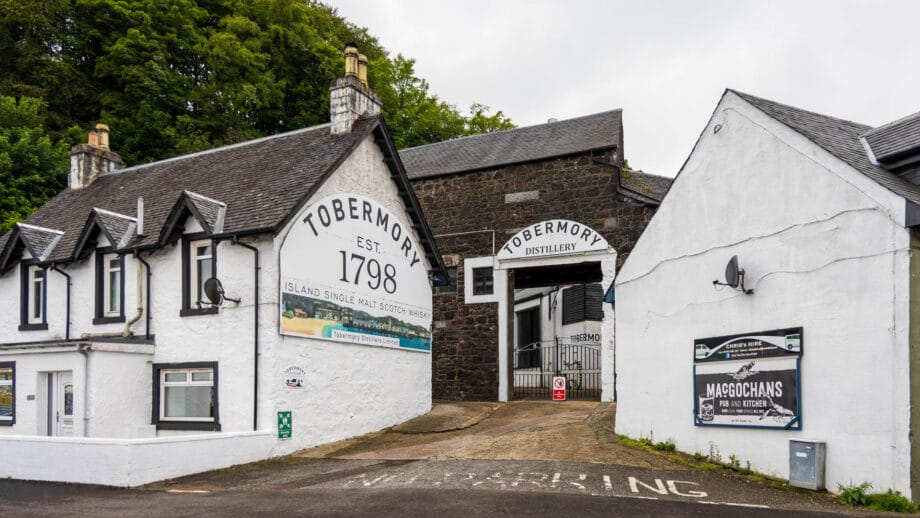
A distillery was built on this site as early as 1790 under the name Ledaig. Opened as Tobermory in the 1990s. Most recently completely renovated in 2019, tours with tastings can now be booked in the building again.
Am Birlinn
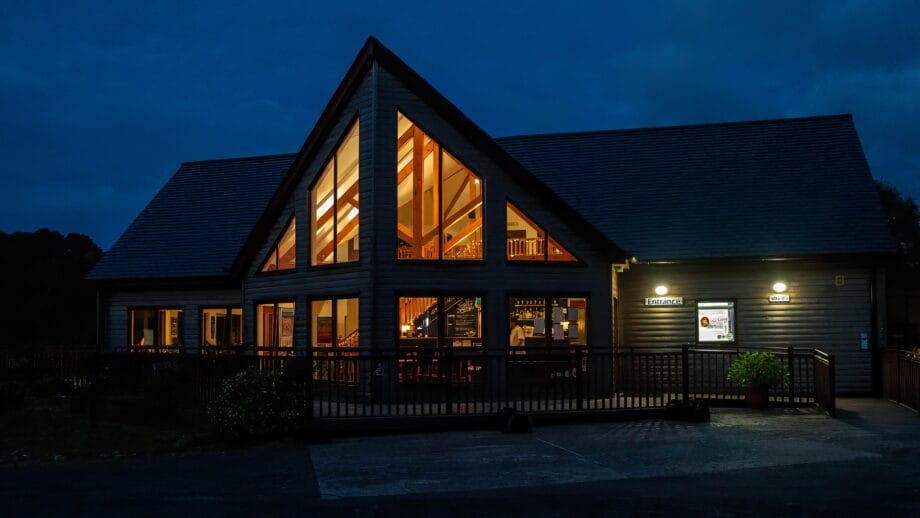
Close to the beach in Calgary is the house with the large windows and the good food. Seafood, meat and veggies are all on offer here. Incidentally, Am Birlinn is run by a German couple.
Cafe Fish
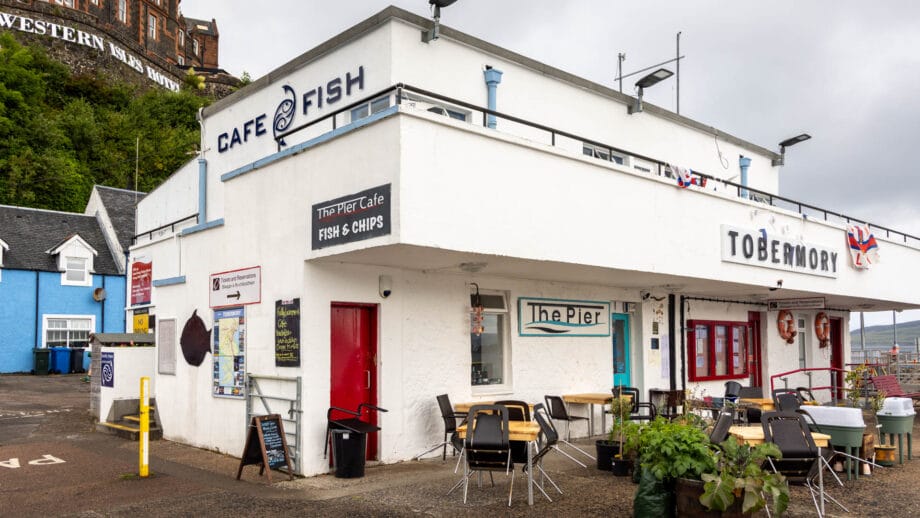
At the north-east end of Tobermory, right by the ferry pier, stands a white building. The upper floor is home to the Cafè Fish, which serves the finest seafood.
The Old Post Office
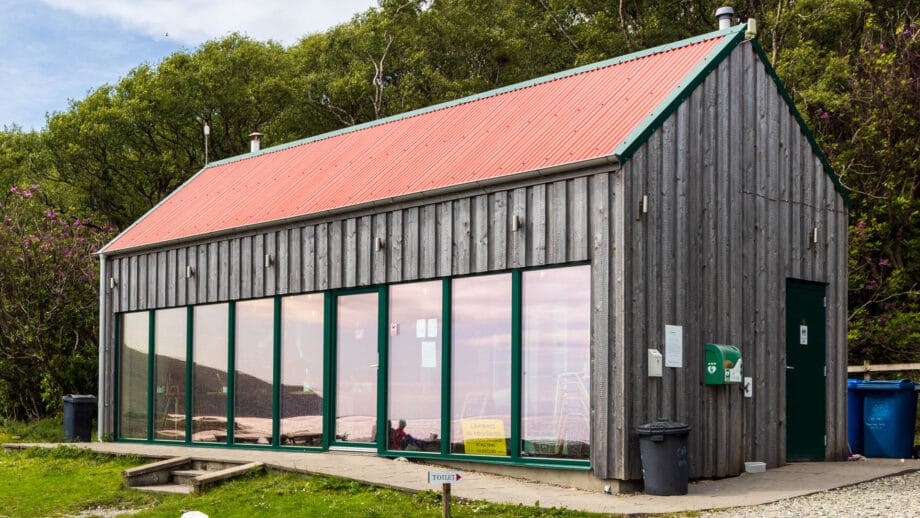
For travellers coming to Lochbuie, the Old Post Office is a good choice for a snack or lunch. The operators describe it as a “farm & coffee/tea shop”.
Craignure Inn
A quaint pub near the Craignure ferry terminal that serves very down-to-earth food. Reservations are not necessary, but it can take a while for the food to arrive. Nevertheless, a cheaper alternative.
Wild life
The Isle of Mull is considered one of the best places to see sea eagles and otters. With a little patience, they can be seen on the sea lochs of the west coast. Eagles in particular often perch on the small islands in the bays. It is worth taking binoculars and a strong telephoto lens for your camera with you on Mull. There are also various providers of guided wildlife tours on Mull.
Journey: Ferries to the Isle of Mull
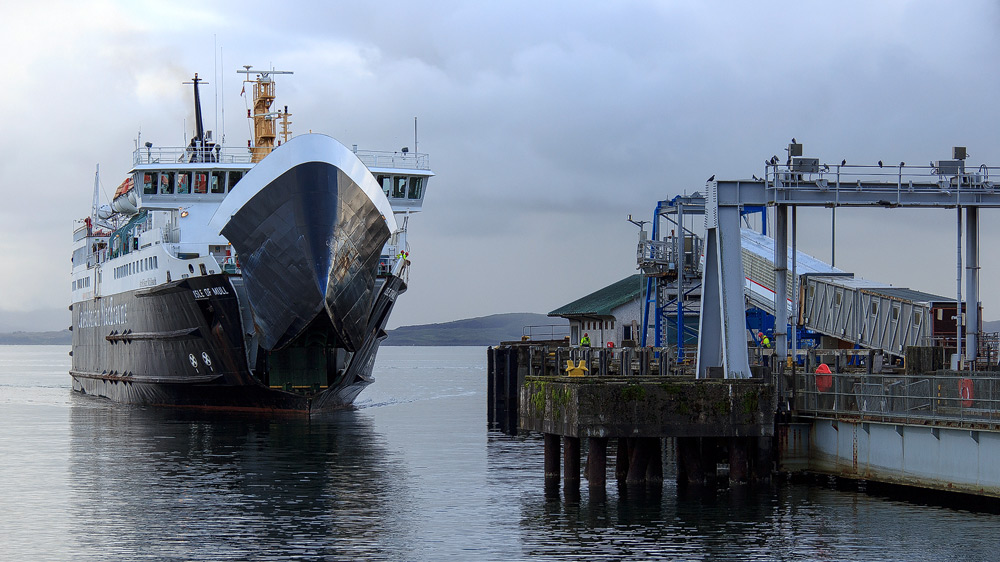
There are three possible connections to the Scottish mainland: from Oban to Craignure, from Lochaline to Fishnish and the small car ferry from Kilchoan to Tobermory. Which one is the right one depends on where you are travelling from.
Ferry: Oban to Craignure
If you are travelling from the south or east, Oban is usually the usual choice. Here the ferry runs to Craignure, which is about halfway up Mull. The crossing takes 45 minutes and ferries leave approximately every two hours.
Prices:
| Oban – Craignure | one way | there/back |
|---|---|---|
| Passenger/Driver | 4.70 pounds | 9.40 pounds |
| Children 5-15 years | 2.35 pounds | 4.70 pounds |
| Car (not driver) | 17.60 pounds | 35.20 pounds |
| Motorhome up to 6m | 17.60 pounds | 35.20 pounds |
| Motorhome up to 8m | 44.00 pounds | 88.00 pounds |
| Motorhome up to 10m | 52.80 pounds | 105.60 pounds |
| Motorhome up to 12m | 61.60 pounds | 123.20 pounds |
| Trailer up to 2.5m | 8.80 pounds | 17.60 pounds |
| Trailers, caravans up to 6m | 17.60 pounds | 35.20 pounds |
| Trailers, caravans up to 8m | 26.40 pounds | 52.80 pounds |
| Motorbike | 8.80 pounds | 17.60 pounds |
| Bicycles | free of charge | |
| Information without guarantee, as of summer 2025 |
For travellers without a car: Buses run three times a day from Glasgow to Oban, costing around £21 and taking just under three hours. It takes around five hours from Edinburgh for around £42 – change in Glasgow. You can also get from Glasgow to Oban by train: the journey takes three hours and costs around £33 one way. From Edinburgh by train you also have to travel via Glasgow. This costs around 50 pounds.
Ferry: Lochaline to Fishnish
If you are travelling by car from Fort William or want to get there, there are two ferries: The Corran Ferry and the Lochaline Fishnish. The route via Lochaline is also an alternative for those travelling to or from Mallaig.
Prices:
| Lochaline – Fishnish | one way | return |
|---|---|---|
| Passenger/driver | 2.95 pounds | 5.50 pounds |
| Children 5-15 years | 1.50 pounds | 3.00 pounds |
| Car (not driver) | 8.60 pounds | 17.20 pounds |
| Motorhome up to 6m | 8.60 pounds | 17.20 pounds |
| Motorhome up to 8m | 21.50 pounds | 43.00 pounds |
| Motorhome up to 10m | 25.80 pounds | 51.60 pounds |
| Motorhome up to 12m | 30.10 pounds | 60.20 pounds |
| Trailer up to 2.5m | 4.30 pounds | 8.60 pounds |
| Trailers, caravans up to 6m | 8.60 pounds | 17.20 pounds |
| Trailers, caravans up to 8m | 12.90 pounds | 25.80 pounds |
| Motorbike | 4.30 pounds | 8.60 pounds |
| Bicycles | free of charge | |
| Information without guarantee, as of summer 2025 |
Ferry: Kilchoan to Tobermory
If you come from the north in a hire car, you can cross over to Mull from the wonderfully wild Ardnamurchan peninsula (or vice versa). The ferry departs every one to two hours several times a day (from May to August also on Sundays).
Prices:
| Tobermory – Kilchoan | one way | return |
|---|---|---|
| Passenger/driver | 3.35 pounds | 6.70 pounds |
| Children 5-15 years | 1.70 pounds | 3.40 pounds |
| Car (not driver) | 10.40 pounds | 20.80 pounds |
| Motorhome up to 6m | 10.40 pounds | 20.80 pounds |
| Motorhome up to 8m | 26.00 pounds | 52.00 pounds |
| Motorhome up to 10m | 31.15 pounds | 62.30 pounds |
| Trailer up to 2.5m | 5.25 pounds | 10.50 pounds |
| Trailers, caravans up to 6m | 8.40 pounds | 16.80 pounds |
| Trailers, caravans up to 8m | 10.40 pounds | 20.80 pounds |
| Motorbike | 5.25 pounds | 10.50 pounds |
| Bicycles | free of charge | |
| Information without guarantee, as of summer 2024 |
Travelling on Mull
The operator West Coast Motors runs three bus routes on the Isle of Mull. They connect the main settlements, but leave out the entire west coast area.
The details are as follows:
- Craignure – Tobermory: This service runs from the island’s main ferry terminal to the main town. Eight times a day, journey time 0:45 hours
- Craignure – Fhionnphort: Again from the central ferry terminal to the ferry across to the island of Iona. Three times a day, journey time 1:15 hours
- Tobermory – Calgary: From the main town to the dream beach. Four times a day, about 50 minutes
The full journey costs roughly £18 each way.
History: Inhabited for 8,000 years
The first settlements can be traced back to 6,000 BC, i.e. the Neolithic period. Even today you can still see isolated relics from this era, for example the Standing Stones of Dervaig.
When the Kingdom of Dalriada expanded around 500 AD, the Isle of Mull soon became part of it. And an important one at that, as the spiritual centre of the time was located on the offshore island of Iona, where kings were crowned.
But in the ninth century, the glory was over and the Vikings invaded – including Mull. When they were defeated, Mull became part of the Lordship of the Isles. But even their power was limited in time, and from the 16th century onwards, the clans ruled over the island. For example, the MacLeans, who owned Duart Castle – one of the most beautiful castles on the island.
Of course, Mull was also affected by the Highland Clearances. There is plenty of evidence of this on the island. For example, an entire village was set on fire to build Glengorm Castle. The capital Tobermory was founded by the fishing company and was therefore a catchment area for many farmers who were evicted. And the Canadian city of Calgary took its name from a bay on the Isle of Mull – the (involuntary) emigrants from Mull wanted to commemorate their old homeland.
